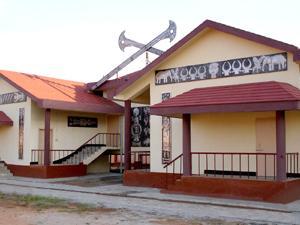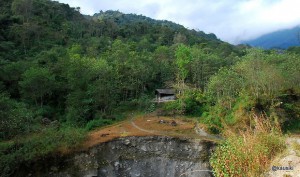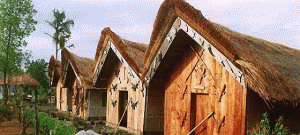A scenic town blessed with breath taking natural beauty, Kohima is the capital city of Nagaland and lies complacently shrouded at the eastern frontiers of the mighty Himalayas. Kohima Travel guide is incomplete without a mention of its natural beauty and rich heritage. The modern city of Kohima was built in by the British to enjoy the eastern region.
HOW TO REACH
By Air:-
The nearest Domestic Airport is Dimapur Airport from Kohima city, roughly 74 Kms from Kohima. Dimapur Airport is well connected to major cities of India like Guwahati, Imphal, Kolkata and Dibrugarh. The second nearest Domestic Airport from Kohima is Imphal Airport, 145 Kms from Kohima. It has regular flights to the places such as Aizawl, Bangalore, Delhi, Kolkata and Silchar.
By Road:-
Kohima is 67 Kms from Dimapur, 138 Kms from Imphal, 155 Kms from Manipur, 350 Kms from Guwahati, 399 Kms from Tinsukia, 501 Kms from Meghalaya, 535 Kms from Tripura, 560 Kms from Arunachal Pradesh and 656 Kms from Mizoram via Nagaland State Road Transport Corporation (NSRTC) on a regular basis.
By Train:-
The nearest Railway station is located in Dimapur, roughly 74 Kms from Kohima. It is well connected to Guwahati and Kolkata.
WHAT TO SEE
Kohima World War-II Cemetery :-

Overlooking Kohima amidst scenic environs, the Kohima War Cemetery is a memorial in honor of those officers and soldiers killed during the World War II. Formerly known as Garrison Hill it is designed as a series of terraces with magnificent stone steps, bearing testimony to one of the most stubborn, close and bloody fighting in the whole of the Second World War.
Kohima Cathedral (Biggest in Asia):-

Nagaland has had a very turbulent and extremely violent past, so many shots fired here and too many lives lost which is why this Cathedral in Kohima stands out. She is like a falcon spreading out her wings standing guard over the city. She is also a beacon of hope and peace, providing a lot of faith to the people of Nagaland and her visitors.
State Museum:-
 Though the Nagas cannot boast of any written documentation of how they came about, a look at the Nagaland Museum in the state capital can give the visitor an idea about the legacy of the Nagas. Located at Bayavü Hill, about 1½ km from the main town, it houses a rare collection of artifacts of each Naga tribe. The State Museum also has authentic Naga precious stones on display. Here one can see the most valued and expensive necklaces used by the Nagas. They are an assortment of precious stones which include cornelian, tourmaline, coral, core of xancus, ivory and other beads, brass and silver bells.
Though the Nagas cannot boast of any written documentation of how they came about, a look at the Nagaland Museum in the state capital can give the visitor an idea about the legacy of the Nagas. Located at Bayavü Hill, about 1½ km from the main town, it houses a rare collection of artifacts of each Naga tribe. The State Museum also has authentic Naga precious stones on display. Here one can see the most valued and expensive necklaces used by the Nagas. They are an assortment of precious stones which include cornelian, tourmaline, coral, core of xancus, ivory and other beads, brass and silver bells.
Naga Heritage Complex Kisama-Kohima:-

The Naga Heritage Complex was inaugurated by the Government of Nagaland on 1st December 2003, where the HORNBILL FESTIVAL is celebrated annually. It is a permanent site at KISAMA situated 12 kms away from Kohima on NH-39. The Naga Heritage Complex serves as “Window to Nagaland†(WTN), aims to showcase the state in a single platform, through which one can have a peep into the Naga Heritage. The complex will also house the “World War II Museumâ€.
Kohima Village:-
 Kohima Village is an admixture of the past and present. In the olden days it was believed that Kohima Village had seven lakes and seven gateways. Till today a huge gate still stands at the entrance of the village, which is engraved with traditional Naga art and adorned with buffalo horns at the top. Stones of varying sizes and shapes implanted within the compound or skulls of buffaloes and Mithuns adorning the portico reminds the glorious status of the great ancestors who had performed grand feasts of merit.
Kohima Village is an admixture of the past and present. In the olden days it was believed that Kohima Village had seven lakes and seven gateways. Till today a huge gate still stands at the entrance of the village, which is engraved with traditional Naga art and adorned with buffalo horns at the top. Stones of varying sizes and shapes implanted within the compound or skulls of buffaloes and Mithuns adorning the portico reminds the glorious status of the great ancestors who had performed grand feasts of merit.
Dzuko Valley:-
 Situated 30 km south from Kohima, Dzükou Valley beckons the intrepid trekkers. At an elevation of 2483m, it provides a panoramic view of the mountains, wild flowers, mountain streams and the surrounding landscapes are second to none. There are two facets to Dzükou – During spring, Dzükou comes alive with wild herbs, flowers of varied hues and species dominates the landscape. Adorned with lilies of varied colors, aconitum, euphobias, wild flower, white, red, yellow and pink rhododendrons, yellow Caltha Palustris and white anemones!!!!
Situated 30 km south from Kohima, Dzükou Valley beckons the intrepid trekkers. At an elevation of 2483m, it provides a panoramic view of the mountains, wild flowers, mountain streams and the surrounding landscapes are second to none. There are two facets to Dzükou – During spring, Dzükou comes alive with wild herbs, flowers of varied hues and species dominates the landscape. Adorned with lilies of varied colors, aconitum, euphobias, wild flower, white, red, yellow and pink rhododendrons, yellow Caltha Palustris and white anemones!!!!
Japfü Peak:-
 Japfü Peak, at 3048 meters above sea level, is the second highest peak in Nagaland. Located about 15 km south of Kohima, it makes for an exhilarating scaling and trekking experience. Watch the sun- paint fascinating pictures over the entire sky, as it travels slowly beyond the horizon. Marvel at the ocean of mist at the crack of dawn. October- March is the right time to try this out. The Blythe Tragopan and other hill birds can also be found here. The vegetation type is sub-tropical, broad leaf on the slopes and temperate broad leaf on higher altitudes. Interestingly, the tallest rhododendron tree featured in the Guinness Book of World Records is found in the Japfü ranges.
Japfü Peak, at 3048 meters above sea level, is the second highest peak in Nagaland. Located about 15 km south of Kohima, it makes for an exhilarating scaling and trekking experience. Watch the sun- paint fascinating pictures over the entire sky, as it travels slowly beyond the horizon. Marvel at the ocean of mist at the crack of dawn. October- March is the right time to try this out. The Blythe Tragopan and other hill birds can also be found here. The vegetation type is sub-tropical, broad leaf on the slopes and temperate broad leaf on higher altitudes. Interestingly, the tallest rhododendron tree featured in the Guinness Book of World Records is found in the Japfü ranges.
Khonoma village:-
 Located 20 km west of Kohima is Khonoma village. Reputed for their courage and valor, it is the village of A. Z Phizo, Father of Naga Nationalist Movement. It has its own share of brushes with history. It was here that the Naga warriors made their last stand against the British in 1879. A simple white pillar commemorates G H Damant, major C R Cock, lieutenant H H Forbes and Sub-major Nurbir Sai, who died fighting the Nagas in Khonoma. The Khonoma gate tells the story of the British infiltration into Naga Hills.
Located 20 km west of Kohima is Khonoma village. Reputed for their courage and valor, it is the village of A. Z Phizo, Father of Naga Nationalist Movement. It has its own share of brushes with history. It was here that the Naga warriors made their last stand against the British in 1879. A simple white pillar commemorates G H Damant, major C R Cock, lieutenant H H Forbes and Sub-major Nurbir Sai, who died fighting the Nagas in Khonoma. The Khonoma gate tells the story of the British infiltration into Naga Hills.
Â
Tuophema Tourist Village:-
 Located 41 kilometers away north from the state capital on NH 61, Tuophema is an Angami tribal Tourist Village. In 2001, the people of the village instigated the creation of a tourist village to develop a sustainable destination. Established in 1431 AD, Tuophema village was originally named after the Erithrina tree. They believed that the tree’s presence will bring them victory. What’s interesting about this Tourist Village is that each khel <locality> from the village has set up an ethnic house with modern facilities for tourists to lodge.
Located 41 kilometers away north from the state capital on NH 61, Tuophema is an Angami tribal Tourist Village. In 2001, the people of the village instigated the creation of a tourist village to develop a sustainable destination. Established in 1431 AD, Tuophema village was originally named after the Erithrina tree. They believed that the tree’s presence will bring them victory. What’s interesting about this Tourist Village is that each khel <locality> from the village has set up an ethnic house with modern facilities for tourists to lodge.
SHOPPING:-
Kohima is a shopper’s delight and some popular items one can buy here are colourful Naga shawls, hand woven shoulder bags, bamboo and wood carved items.
FOOD:-
Naga food mainly comprises of meat and fish, most of which is dried and fermented. People in this region are very fond of pork and beef, something which is not usually consumed in other parts of the country. Naga food also uses generous amounts of ginger, bamboo shoots and their famous Raja Mircha (King Chilly), which provides the food with a unique flavour and aroma. Nagas enjoy their vegetables boiled and use a lot of green leafy organic vegetables in their cooking. A typical Naga meal would comprise of a meat dish (beef or pork), boiled vegetables, rice and chutney (Thatu).